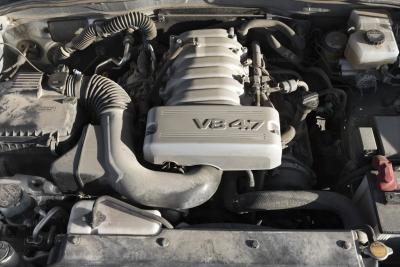
There are many ways to build a fuel-efficient engine, some requiring more compromise than others. Small-displacement engines typically get better fuel economy than larger ones, but do so at the expense of horsepower and torque. High-compression and advanced ignition timing improve fuel mileage, but will require that you use high-octane fuel at all times. However, by taking a few cues from Ford's new EcoBoost engines, you too can build a dual-purpose small-block V-8 with plenty of power, fuel economy when you need it and the ability to run on low-octane fuel when high-octane isn't available.
Start with either a 1975 to 1976 262 ci or later 305 ci small block. The only difference between these two engines is the crankshaft, which uses a 3.00-inch stroke instead of the 305's 4.408-inch stroke. You could try to find an original 3.00-inch crankshaft or have a custom unit made, but at that point you might as well just use an original 262 if you can find one.
Purchase a set of forged aluminum, turbo-specific pistons. These would be designed to deliver a 9.5:1 compression ratio when used with a 64 cc combustion chamber. No one makes pistons like these, so you'll need to call up your favorite piston manufacturer to have a set custom made. Coat the tops of the pistons with ceramic-metallic powdercoating to boost power and efficiency.
Obtain a set of late-model Vortec cylinder heads. Coat the combustion chamber roofs, the insides of the exhaust ports and the insides of the intake ports with ceramic insulator. The Vortec heads were designed for the larger-bore 350, so expect a slight drop in port flow. But the head's superior design will still boost power, increase efficiency and will help to reduce detonation.
Install a Vortec-specific intake manifold. Use this if you're using multi-port fuel injection (recommended) or use a carburetor-to-Vortec-head manifold if you're using throttle-body injection. GM Performance and Holley make a few such manifolds, and Edelbrock carries a wide variety of Vortec-carburetor manifolds.
Install your fuel injection system of choice. Multi-point injection systems are more efficient and work well with turbochargers, but generally cost more to engineer and install. An original or aftermarket throttle body injection unit will bolt onto the carburetor flange, but may cost you a bit in terms of fuel economy and octane tolerance. Either way, you'll need to use a turbo-specific aftermarket fuel management computer, an electronic boost management unit and a High Energy Ignition distributor.
Install the engine into your car, and install a rear-mount twin-turbo setup in place of your stock muffler. You can purchase a complete set-up from squires or engineer your own using a pair of used Mitsubishi VG30DETT or Chrysler 2.2L turbos with inlet diameters no larger than 40 mm, preferably 35 mm.
Take your car to a shop experienced in tuning fuel-injected/turbocharged engines and computer programming. Use a remote turbo control to dial up only as much boost as you need for any given situation. Install an oxygen sensor interceptor/controller (commonly called an EFIE) to change your air/fuel ratio on the fly to compensate for lower-octane fuels, higher-boost levels and desired fuel efficiency.